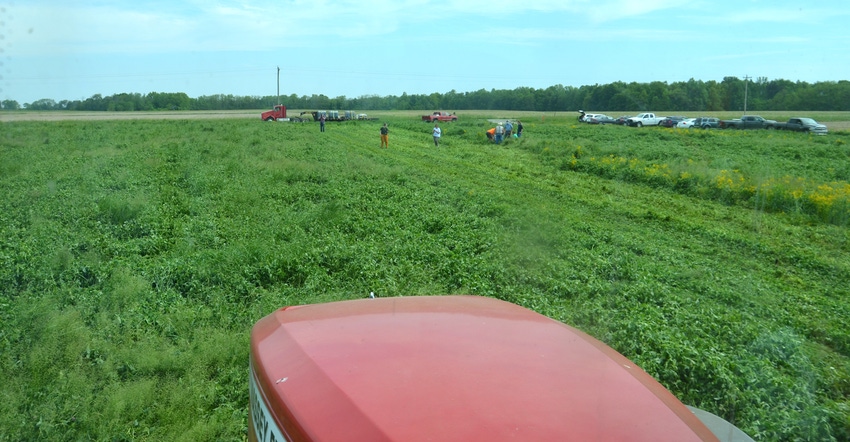August 26, 2021

Dozens of companies are asking farmers to sign contracts, offering them money to adopt practices such as no-till and cover crops to sequester carbon. Recently, Jim Mintert, a Purdue University Extension ag economist and director of the Purdue Center for Commercial Agriculture, discussed challenges and prospects for these programs with colleagues Nathanael Thompson and Carson Reeling.
One challenge out of the gate, Thompson says, is whether paying for these practices would have a substantial impact on greenhouse gas emissions.
“In some of the most important target areas, some counties already report as high as 94% of their acreage in no-till or minimum tillage,” Thompson says. “Nationally, about 50% of cropland is in no-till or minimum tillage.
“Even if every acre of U.S. cropland was in no-till or minimum tillage, we could sequester 123 million metric tons of carbon per year. That would only account for about 2% of all U.S. carbon emissions.
“Only 4% of the U.S. crop acres are in cover crops. Even if every acre was planted into cover crops, sequestering 147 million metric tons of carbon, it would only amount to 3% of total U.S. carbon emissions.”
Procedural challenges
If you assume carbon credit programs are helpful, there are still issues, Mintert says. Currently, only a few farmers have signed contracts. The length of the contract is a sticking point. While Australia has promoted 100-year contracts and offered 25-year contracts at reduced rates for those who balked, most U.S. contracts are in the two-to-20-year range.
“If I had never grown a cover crop in my life and was asked to sign a 20-year contract, I would have concerns,” Thompson says. Some contracts are vague on what happens if a grower breaks the contract, he adds.
“Maybe I’m forced to rut a field and need to till it,” Mintert offers as an example. “Does that void the contract? We’ve heard some are considering ‘pause’ clauses where a farmer could stay in but not get paid again until he was no-tilling again. Once you’re not getting paid, where is the incentive to keep going?”
Plus, some contracts are vague on how verification that you’re sequestering carbon will occur, Reeling says. “We don’t see someone coming to your farm and pulling samples,” he says. “It will be based on modeling.”
Land ownership is also a huge challenge, Thompson says. About half of all U.S. farmland is owned by landlords. Many contracts are year to year. Will that practice change? What if land changes hands and the tenant who signed the contract leaves?
Toward the future
“We’re definitely still in the early days of sorting this concept out,” Mintert says. “If you consider it, know what’s in the contract and ask questions.”
Thompson adds, “Start by assessing what your current practices are. Are you ready to consider no-till or cover crops? If you’re considering it just to earn these payments, how much will you invest to change systems?”
Mintert continues, “It looks to us like there is room for the federal government to play a role — perhaps in verifying and standardizing practices, not necessarily in running a carbon market itself.
“If carbon markets are going to work in row crop agriculture, these issues must be ironed out, and it’s likely carbon prices will need to go higher to attract more participants.”
Comments? Email [email protected].
You May Also Like




